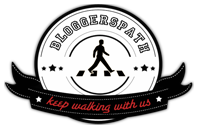Whether you’re blogging for money or blogging for profit, most people write so that others will read. With so many different social media platforms available and with heavy competition for bloggers represented on all of them, it can be difficult to set your brand apart from the many others. If you’re looking to gain Instagram followers and carve out your place on Twitter and Facebook, you will need to look carefully at your logo and brand. Sometimes a blogger’s brand is not being represented the way they desire on social media, so if you’re looking to improve brand awareness and get better results, you might want to look at these ideas.
The right social media networks matter.
Gaining some footing and moving forward on social media means knowing which platforms are best suited for your purposes. If you’re looking to make money with your words, you should know that, because of the hundreds of social media apps available, it’s easy to become confused about which ones are best for your audience engagement. Remember that some social media networks will allow you to sell CPC or CPM ads. Others are perfect for including affiliate links in your content. Your job should be to find the networks that closely align with your brand’s image and its goals. You want to reduce the amount of time and effort required to make real progress, so do your homework and research. Look at popular hashtags for Instagram before opting for some arbitrary hashtag or investigate the use of paid membership model on YouTube that allows you to offer premium content on your blog for those who are willing to pay to read. Remember to advertise your sites by informing associates, employees, and even social media users of each and every social media platform you are using.
Visual branding is also important.
Visuals play a significant role in social media branding, especially for bloggers. When profiles differ across platforms or look as if they could be owned by a different blogger, consumers will sense a disconnect. And because many bloggers monetize their blog through the sale of merchandise with the blog’s brand name and logo, your marketing should be consistent across all platforms. This allows your consumers to recognize your blog no matter what app they’re using or what platform they prefer most.
Your blog logo is the first glimpse that readers will have into your area of passion or expertise. It helps your audience know what to expect and understand what you are all about. Logos and brands usually combine several different elements to paint an overall picture of who you are, with each feature displaying something special about your identity. If you’re not sure where to start, you may want to look at some blog logos that are among the best in 2018.
- Choosing your palette is critical to effectively represent what you want to portray about you and your blog. Keep it classic, simple, and avoid trendy combinations. Color has been shown to not only affect people’s moods but also perceptions of the business or industry.
- Fonts. If you decide to use lettering, you will need to choose a font. Remember that fonts carry with them an emotional punch and are associated with particular perceptions. Script typefaces, for example, are often perceived as sophisticated and timeless, while display fonts can be perceived as whimsical and friendly. Choose accordingly
- Symbols or graphics. Choosing to use a symbol or graphic has its advantages, as long as you understand that artistic representations requiring people to make interpretations need to be “easy to read.” Without a dependency on text, you leave much to the interpretation of the perceiver. Be sure to get feedback and study up on your symbol before launching, so that it truly represents your blog.
Bloggers are also using visual content to smash their consumer engagement out of the park, so take a look at five blogs that have stepped up their game in that area.
Social media branding only works if your content is worth reading.
The most important part of your blog will always be what you write. Sharing meaningful stores and covering your writing with research will encourage readership regardless of whether or not you’ve chosen the best color combination for your brand. Provide shorter pieces of 350-500 words that are easy and fast to read and alternate these with longer, in-depth pieces of 750-1000 words. Remember that your followers come to hear what you have to say and be entertained. Curating content means you can provide information and build your sense of expertise while providing a steady flow of social media posts that will gather interested readers. You can share the ideas and interests of others and build your community with user-generated content as well Because blog posts, videos, and other content will allow you to build a community of customers without being overly promotional, you are more likely to see the benefits of creating compelling copy.
What are some social media strategies that you have found particularly useful in your blog’s marketing strategy? Feel free to share here.




